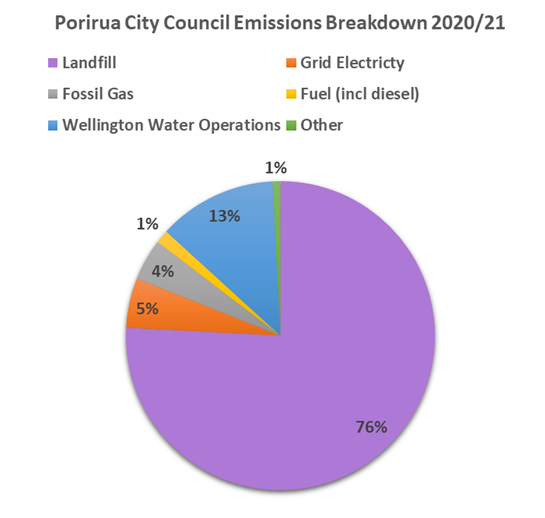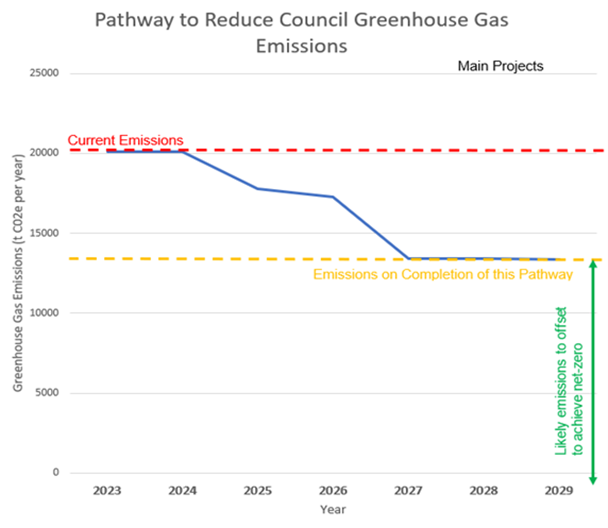

Porirua City declared a climate emergency in June 2019, and we launched a three-year Climate Change Strategy, Rautaki o Te Ao Hurihuri in December 2020.
On this page you will find
We know that we need to act now, while thinking long term. We need to work with our communities to build a strong, just, equitable and resilient Porirua for the future.
The most recent report from the Intergovernmental Panel on Climate Change (IPCC) tells us that
In 2022 the launch of the draft National Adaptation Plan and the Emissions Reduction Plan, signalled a focus in Aotearoa on reducing emissions and preparing for our changing climate.
Porirua City Council is committed to reaching net zero emissions by 2050. Our Climate and Environmental Planning team is leading the implementation of our climate change strategy.
Our current focus areas on our path to net zero include:
We’re also working to better understand the impacts of climate change on our region so that we can prepare and adapt, through the Wellington Regional Climate Change Impact Assessment.
Our team will be working with Porirua’s communities to develop a longer-term climate action plan. The plan will focus on the Porirua we want for ourselves and future generations. Our diverse, youthful and compact communities give us opportunities to create positive change that is bold, innovative, energising and inspiring.
If you are interested in being involved in our climate action and/ or development of our plan, please email [email protected].
Porirua City's Climate Change Adaptation Programme is about preparing our council and our city for the impacts of climate change. Phase 1 of the programme aims to understand the impacts of climate hazards on council's own assets like roads, parks, property and three waters infrastructure.
This will help us to prioritise areas for adaptation planning with our communities.
You can find more information in the FAQs below and the Council paper here.

Porirua City is already experiencing the impacts of climate change. Sea level rise is leading to coastal erosion and inundation, and increasing temperatures are causing more frequent and intense extreme weather events and flooding.
Our largely reactive approach to severe weather events is a significant cost to council - $30m capex has been spent on clean-up after floods, slips and other storm damage in the last ten years. The Climate Change Adaptation Programme will enable us to take a planned and equitable - rather than reactive - approach to building our city's resilience to climate change, and to prepare ourselves for government funding that may become available for adaptation planning.

The overarching Climate Change Adaptation Programme is made up of three phases:
We are currently in Phase 1 – climate change impact asset management planning. In this phase, we are working with Asset Managers across council to understand which of our assets are most at risk from climate hazards.
We are doing this using our asset data overlayed with hazard information from our District Plan. Hazard information includes coastal erosion and inundation with a 1:100 year event now and with 1m sea level rise, and flooding with a 20% increase in rainfall volume and intensity.
We are working with Asset Managers to better understand not only the exposure of our assets (i.e. are they in one of the hazard overlays outlined above?), but their vulnerability (e.g. how deep/frequent/long-lasting/fast moving is a flood likely to be?) and the capacity of our assets to adapt (e.g. can we move it or build it from different material?).
This information will help us to understand the cost of the challenge we are facing, and think about some possible adaptation options to address the risk. We will then use this information to start adaptation planning with our communities in the areas most vulnerable to climate hazards in Phase 3 of the Adaptation Programme.
In Phase 2 we will bring together the findings of the Parliamentary Inquiry into Climate Adaptation and the government's direction on Climate Adaptation which will further inform local government's adaptation response.
In 2022, we worked with Toitū Envirocare to identify and measure Porirua City Council’s key emission sources:

In July 2023, Council endorsed the Pathway to Emissions Reduction which will reduce greenhouse gas emissions from Council facilities by 30% by 2030. These projects will deliver a range of additional benefits including increased organisational resilience and reduced operational costs longer term.
We will continue to work over the coming years to identify other opportunities for greenhouse gas emissions reduction and offsetting to ensure we can meet our net zero target by 2050.


| Project | Project details |
|---|---|
| Electric Vehicles (EVs) and charging stations |
Council vehicles to be replaced with EVs when suitable at their end of life to reduce emissions from transport. Installation of EV charging infrastructure at council buildings to support decarbonisation of council vehicles. |
|
Gas boiler conversion to heat recovery systems |
Decarbonising Council facilities by replacing gas boiler systems with electric heat pump and heat recovery technology. Three sites have been confirmed for replacement so far: Cannons Creek Pool, Pātaka and the Aquatic Centre at Te Rauparaha Arena. |
| Construction and Demolition Facility |
Currently being investigated as part of a regional initiative. This will divert salvageable materials from the landfill and encourage their reuse in the community. It will reduce demand for new materials and unnecessary waste at the landfill. Which will reduce greenhouse gas emissions. |
| Organic waste diversion |
Currently being investigated as part of a regional initiative. This initiative will divert organic waste from the landfill and will reduce greenhouse gas emissions. |
| Solar Projects |
Approved by Council for investigation to determine viability and cost effectiveness. |